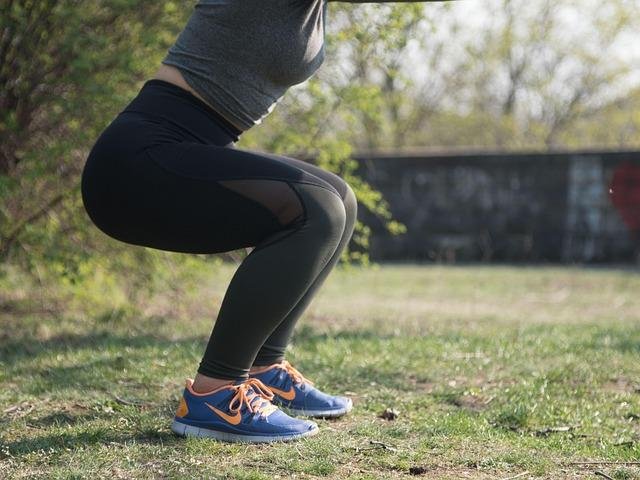In a world brimming with fitness fads and intense workout regimens, walking often quietly takes a backseat—overlooked as a mere pastime rather than a powerful tool for shedding pounds. Yet, this simple, accessible activity holds surprising potential for those seeking to lose weight without the strain of high-impact exercise. But just how effective is walking when it comes to trimming down and keeping the weight off? In this article, we’ll unravel the science behind walking for weight loss, examining its benefits, limitations, and how to make every step count on your journey toward a healthier you.
Table of Contents
- Walking for Weight Loss Uncovered Understanding the Science Behind Every Step
- Optimizing Your Walking Routine Duration Intensity and Frequency Explained
- The Role of Walking Pace How Speed Influences Calorie Burn and Fat Loss
- Combining Walking with Nutrition Tips for Maximum Weight Loss Results
- Incorporating Strength Training alongside Walking to Boost Metabolism
- Tracking Progress and Staying Motivated Tools and Techniques to Keep You Moving
- Q&A
- In Retrospect

Walking for Weight Loss Uncovered Understanding the Science Behind Every Step
Walking consistently activates multiple muscle groups and gently elevates your heart rate, making it a reliable method to burn calories and support fat loss. While it might seem less intense compared to high-impact workouts, the cumulative effect of daily walks, especially brisk ones, significantly boosts your metabolism. Moreover, walking encourages the body to utilize stored fat as energy, especially when performed in a fasted state or combined with proper nutrition. This makes each step an essential contributor to overall calorie expenditure and body composition improvement.
To maximize walking’s effectiveness for weight loss, consider these elements:
- Duration: Aim for at least 30 minutes per session to tap into fat-burning zones.
- Intensity: Incorporate intervals of brisk walking or hill climbs to spike heart rate.
- Frequency: Daily activity compounds calorie burn and improves endurance.
- Posture and form: Proper biomechanics help prevent injury and optimize muscle engagement.
| Walking Speed | Calories Burned (per 30 min) | Best For |
|---|---|---|
| Casual (2 mph) | 85 | Beginners, light movement |
| Brisk (3.5 mph) | 150 | Effective weight loss |
| Power Walking (4.5 mph) | 200+ | Fat burn, cardiovascular |

Optimizing Your Walking Routine Duration Intensity and Frequency Explained
To maximize the benefits of walking for weight loss, it’s essential to dial in the right balance of duration, intensity, and frequency. For most, starting with a manageable duration such as 30 minutes per session lays a strong foundation. Gradually increasing to 60 minutes boosts calorie burn without overwhelming the body. Intensity is equally important – mixing brisk walking with intervals of faster pace challenges your metabolism and encourages fat burning. Walking at a pace where talking is possible but singing is difficult ensures you stay in an optimal fat-burning zone. Frequency wise, aiming for at least 5 days per week creates consistency which is pivotal for sustainable weight loss.
Consider the following guidelines to optimize your routine effectively:
- Duration: 30-60 minutes per session
- Intensity: Moderate brisk pace with occasional speed bursts
- Frequency: 5+ days weekly for best results
| Factor | Beginner Level | Advanced Level |
|---|---|---|
| Duration | 20-30 mins | 45-60 mins |
| Intensity | Steady pace, conversational | Brisk pace + intervals |
| Frequency | 3-4 days/week | 5-6 days/week |
Tailoring your walking plan not only accelerates fat loss but also enhances cardiovascular health and mood, turning a simple daily stroll into a powerful wellness tool.

The Role of Walking Pace How Speed Influences Calorie Burn and Fat Loss
Walking speed plays a pivotal role in determining how many calories you burn and how effectively you shed fat. A leisurely stroll will torch fewer calories compared to a brisk walk, which stimulates your cardiovascular system and elevates your metabolism. By simply increasing your pace, you can shift your body from burning primarily carbohydrates to tapping into fat reserves. This means that walking faster isn’t just about covering more ground — it’s about transforming your walk into a powerful fat-burning exercise.
Consider these effects of walking pace on calorie expenditure and fat loss:
- Slow pace (2 mph): Burns about 150 calories per hour, mainly from carbohydrates.
- Moderate pace (3 mph): Burns roughly 240 calories per hour and begins to engage fat stores.
- Brisk pace (4 mph): Can burn up to 340 calories per hour, maximizing fat utilization.
| Walking Pace | Calories Burned (per hour) | Primary Energy Source |
|---|---|---|
| 2 mph (Slow) | 150 | Carbohydrates |
| 3 mph (Moderate) | 240 | Mixed (Carbs & Fat) |
| 4 mph (Brisk) | 340 | Fat |

Combining Walking with Nutrition Tips for Maximum Weight Loss Results
Incorporating a balanced diet alongside regular walking can significantly amplify your weight loss efforts. While walking burns calories and boosts metabolism, pairing it with mindful nutrition helps create a sustainable calorie deficit critical for shedding pounds. Focus on nutrient-dense foods such as fresh vegetables, lean proteins, whole grains, and healthy fats to fuel your body without overloading it with empty calories. Staying hydrated and avoiding processed sugars further enhance your energy levels, making every step more effective in torching fat.
To maximize the synergy between walking and nutrition, consider these practical tips:
- Pre-walk snack: Opt for a small, protein-rich bite like a handful of almonds or a banana to sustain energy.
- Post-walk meal: Prioritize a balanced plate with fiber, protein, and healthy fats to aid muscle recovery and maintain satiety.
- Consistent meal timing: Align your meals and snacks to complement your walking schedule, preventing energy crashes.
- Limit high-calorie beverages: Swap sugary drinks for water or herbal teas to avoid unnecessary caloric intake.
| Timing | Nutrition Tip | Benefit |
|---|---|---|
| Before Walking | Light carb boost (fruit) | Energy for sustained walking |
| During Walk | Hydration (water) | Maintains stamina |
| After Walking | Protein + Veggies | Muscle repair & fullness |

Incorporating Strength Training alongside Walking to Boost Metabolism
To amplify the benefits of walking for weight loss, incorporating strength training can dramatically enhance your metabolic rate. While walking primarily improves cardiovascular health and burns calories during the activity, strength training builds lean muscle mass that keeps your metabolism elevated even at rest. This means you continue to burn more calories throughout the day, making your weight loss efforts more efficient and sustainable. Combining these two forms of exercise creates a powerful synergy: the endurance from walking paired with the muscle-boosting effects of strength workouts.
Integrating strength training doesn’t require expensive equipment or hours at the gym. Simple exercises, such as bodyweight squats, lunges, and push-ups, can be performed at home or alongside your walking routine. Aim for 2-3 sessions per week to see meaningful results. Below is a quick guide to help balance both activities effectively:
| Activity | Recommended Frequency | Primary Benefit |
|---|---|---|
| Walking | 5-7 days per week | Calorie burning and cardiovascular health |
| Strength Training | 2-3 days per week | Muscle building and metabolism boost |
- Consistency is key: Regular sessions improve both endurance and strength.
- Progressive overload: Gradually increase resistance or repetitions for muscle growth.
- Recovery matters: Allow muscles to rest between strength workouts to avoid injury.

Tracking Progress and Staying Motivated Tools and Techniques to Keep You Moving
To truly harness the power of walking for weight loss, it’s essential to monitor your progress with smart tools that keep you motivated. Fitness trackers and smartphone apps provide real-time feedback on steps taken, calories burned, and distance covered, offering a tangible way to see improvement over time. Setting weekly and monthly goals helps break down the journey into manageable milestones, creating a sense of accomplishment that fuels continued effort. Consider integrating simple rewards for hitting targets, like a new workout outfit or a relaxing massage, to keep enthusiasm high.
Beyond technology, time-tested techniques encourage consistency and accountability. Keep a walking journal to log feelings, energy levels, and noticeable changes in your body, which reinforces your commitment. Pairing walking sessions with a buddy or joining local walking groups adds social motivation and makes the routine more enjoyable. Here’s a quick breakdown of practical tools and techniques:
- Wearable activity trackers: Fitbit, Garmin, Apple Watch
- Walking apps: MapMyWalk, Pacer, Strava
- Goal setting: Step targets, time goals, calorie burn
- Written logs: Daily notes on progress and feelings
- Social support: Walking groups and accountability partners
| Tool/Technique | Benefit | Frequency |
|---|---|---|
| Fitness Tracker | Instant progress data | Daily |
| Walking Journal | Reflection and motivation | Weekly |
| Social Walk Group | Accountability and fun | 2-3 times/week |
| Goal Setting | Structured progress | Monthly |
Q&A
Q&A: Walking for Weight Loss – How Effective Is It?
Q1: Can simply walking help me lose weight?
A1: Absolutely! Walking is a low-impact, accessible exercise that burns calories and helps create the calorie deficit necessary for weight loss. While it might not torch calories as quickly as running or high-intensity workouts, consistency is key. Regular walking combined with mindful eating can lead to gradual, sustainable weight loss.
Q2: How much walking do I need to do to see weight loss results?
A2: The general recommendation is at least 150 minutes of moderate-intensity walking per week—roughly 30 minutes a day, five days a week. To boost weight loss, increasing both the duration and intensity, such as walking briskly or adding hills, can burn more calories. Ultimately, it depends on your current fitness level, diet, and weight loss goals.
Q3: Does walking intensity matter for shedding pounds?
A3: Yes, intensity does influence calorie burn. A leisurely stroll burns fewer calories than a brisk power walk. Walking at a pace that raises your heart rate but still allows for conversation (moderate intensity) is ideal. Incorporating intervals of faster walking or uphill routes can amplify fat burning.
Q4: Is walking more effective for weight loss than diet alone?
A4: Combining walking with a balanced, calorie-controlled diet yields the best results. While diet controls calorie intake, walking increases calorie expenditure. Exercise also supports muscle tone and metabolism, making weight loss more manageable and sustainable compared to diet alone.
Q5: Can I rely solely on walking, or should I add other exercises?
A5: Walking is a great foundation, especially for beginners or those with joint concerns. However, supplementing walking with strength training can enhance weight loss by building muscle, which boosts resting metabolism. Flexibility and balance exercises also contribute to overall health and fitness.
Q6: How long will it take to see weight loss from walking?
A6: Results vary widely based on starting weight, walking routine, diet, and metabolism. Generally, noticeable changes may appear within 4 to 8 weeks of consistent walking paired with healthy eating. Patience and persistence pay off in the long run.
Q7: Are there any tips to maximize walking’s weight loss benefits?
A7: Sure! Keep a brisk pace, incorporate intervals, vary your routes to include hills or stairs, carry light weights or wear a weighted vest for added resistance, and stay hydrated. Tracking steps or distance with a fitness tracker can motivate you to reach daily goals.
Q8: Is walking safe for everyone aiming to lose weight?
A8: For most people, walking is safe and gentle on the body. However, those with medical conditions should consult a healthcare provider before starting a new exercise program. Starting slow and progressively increasing intensity minimizes injury risk.
Q9: How does walking impact mental health and weight loss motivation?
A9: Walking releases endorphins and reduces stress, which can curb emotional eating and boost motivation. Enjoying your walks—perhaps in nature or with a friend—can turn exercise into a rewarding part of your routine rather than a chore.
Q10: In summary, is walking an effective strategy for weight loss?
A10: Yes, walking is an effective and sustainable strategy for weight loss when combined with healthy dietary habits and a consistent routine. Though it may require patience, walking offers numerous physical and mental health benefits, making it a worthwhile path on your weight loss journey.
In Retrospect
In the end, walking emerges as a quietly powerful ally in the journey toward weight loss. It may not promise rapid transformations or dramatic results overnight, but its steady, accessible nature offers a sustainable path to shedding pounds and improving overall well-being. Whether you’re a seasoned athlete or someone just lacing up your shoes for the first time, walking invites you to move at your own pace—turning simple steps into meaningful progress. So, as you step forward, remember that in the world of weight loss, sometimes the gentlest journey leads to the most enduring change.















Leave feedback about this